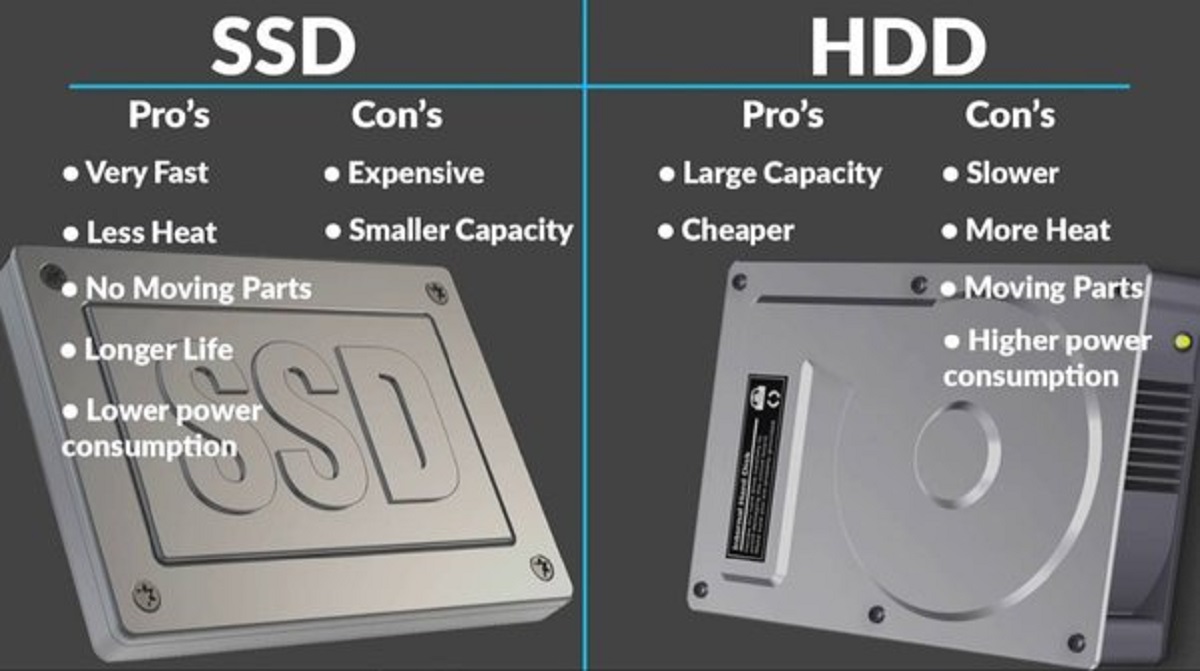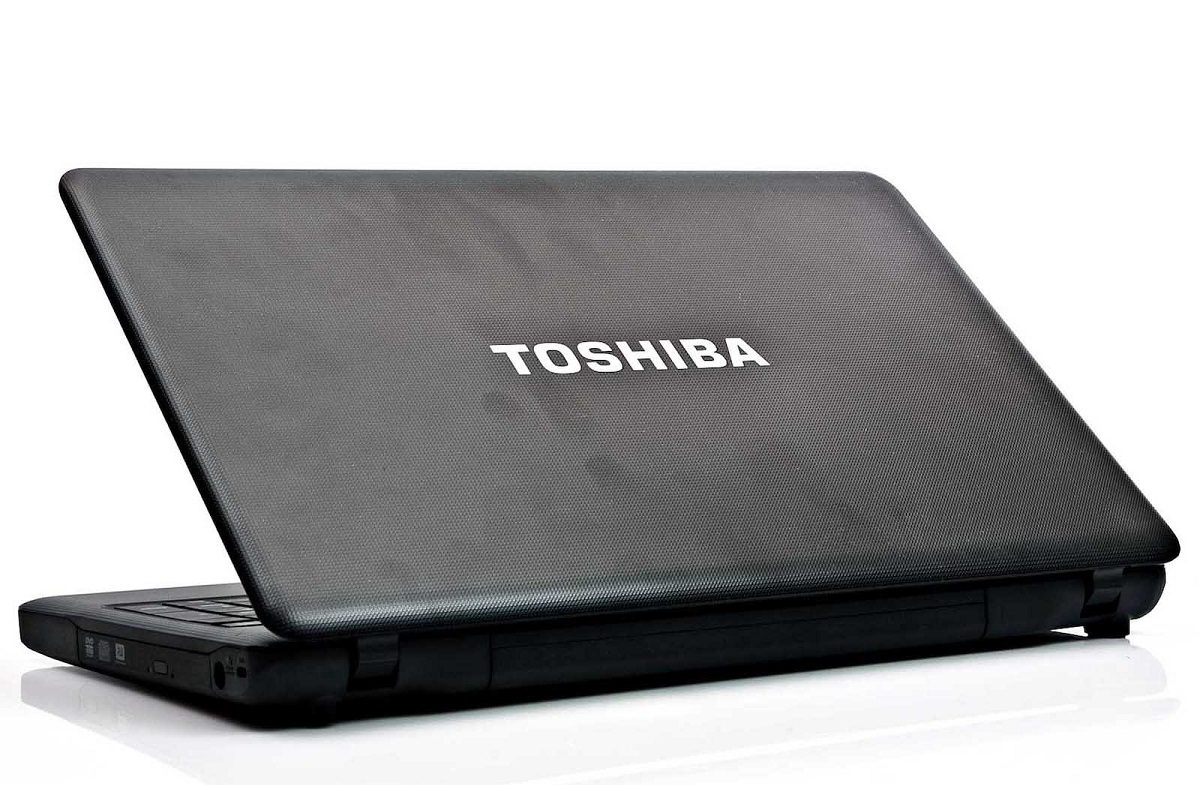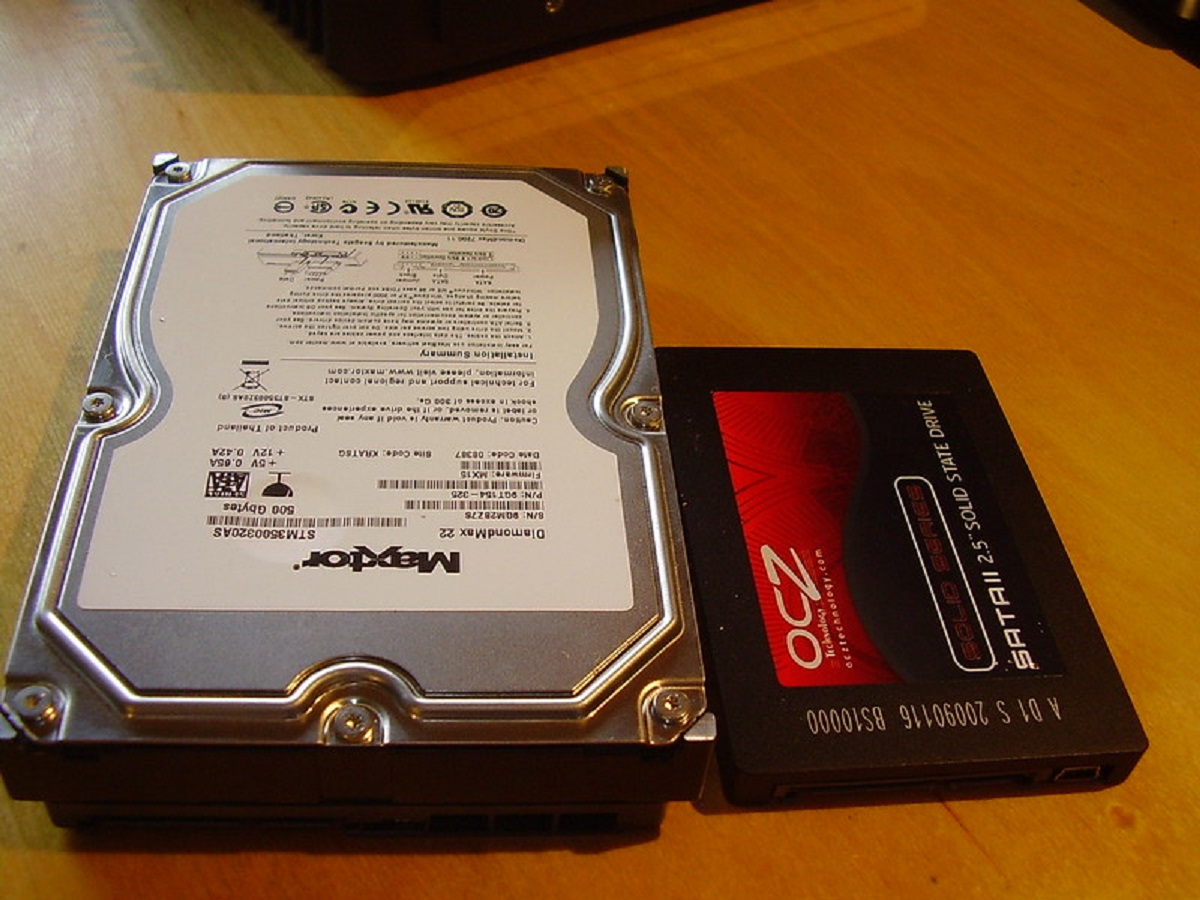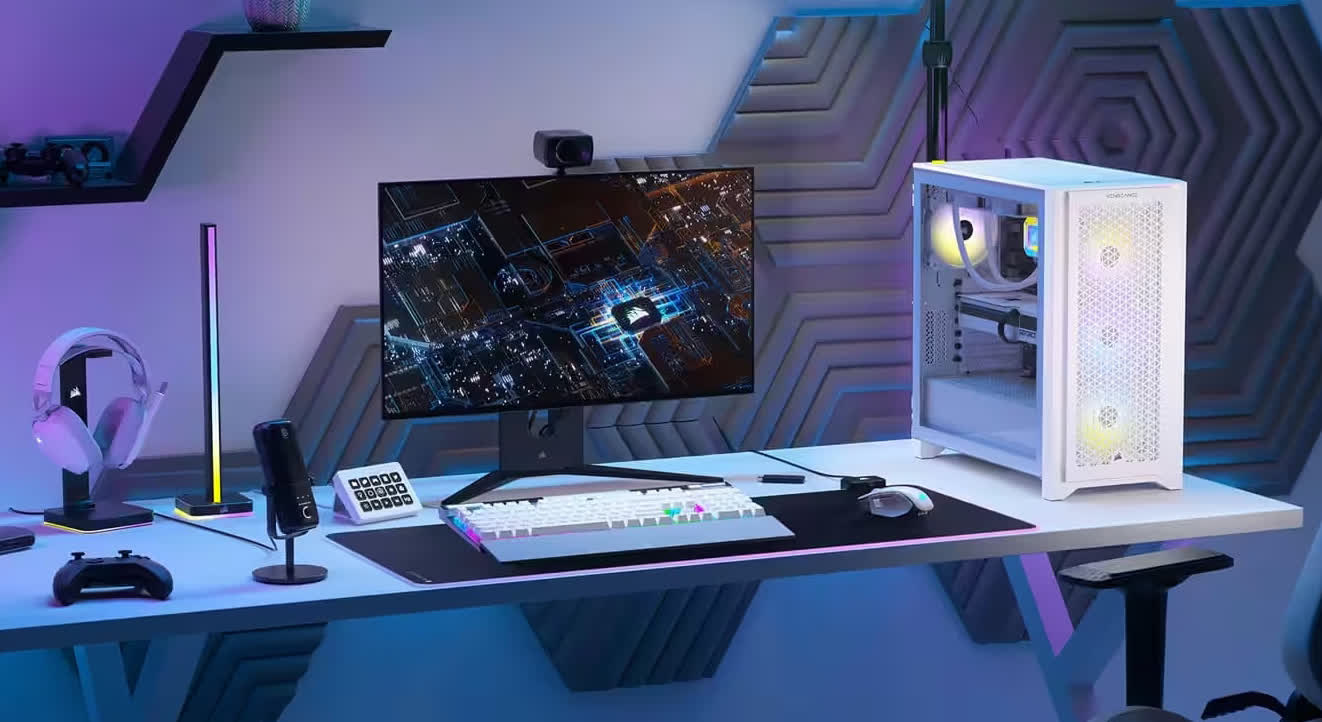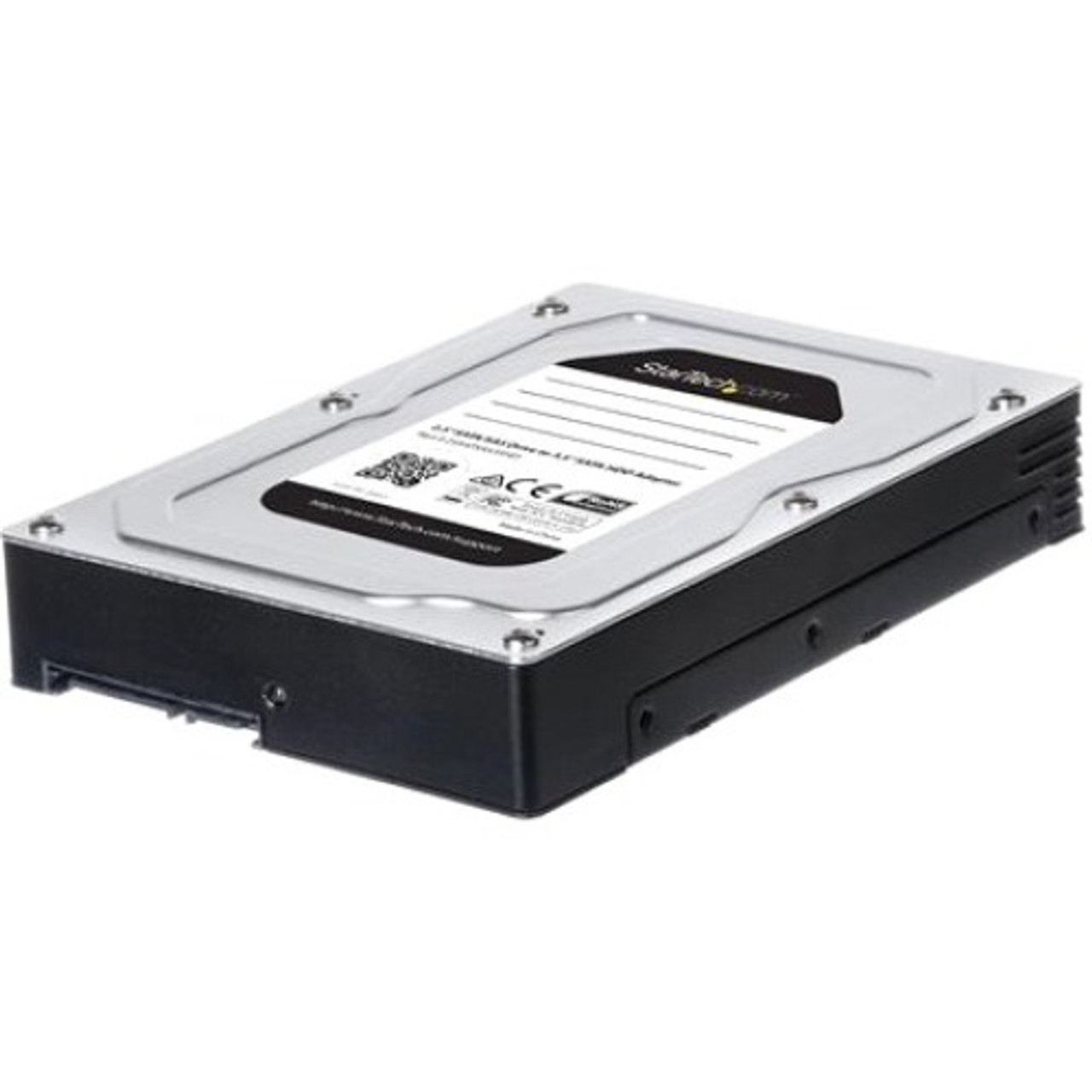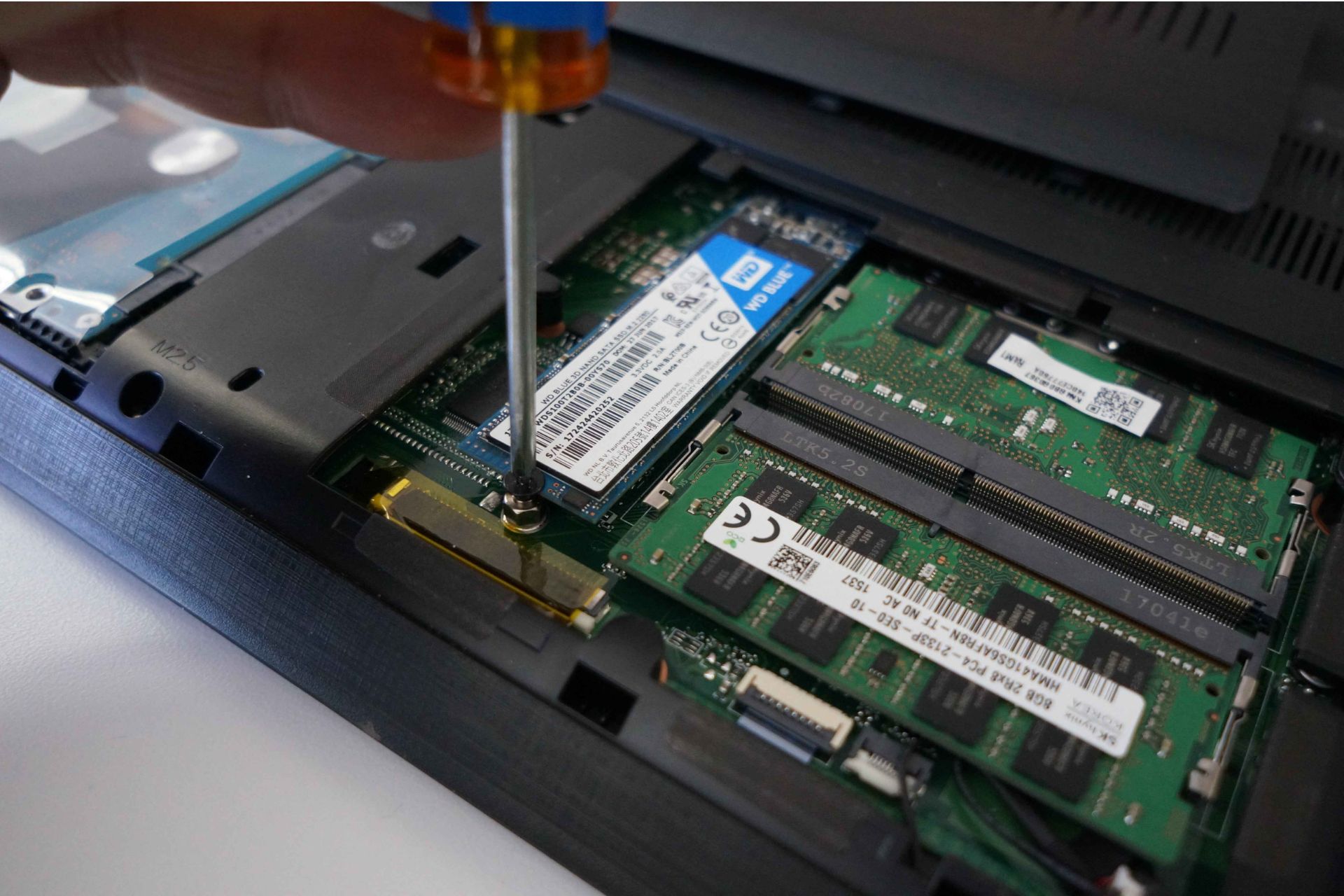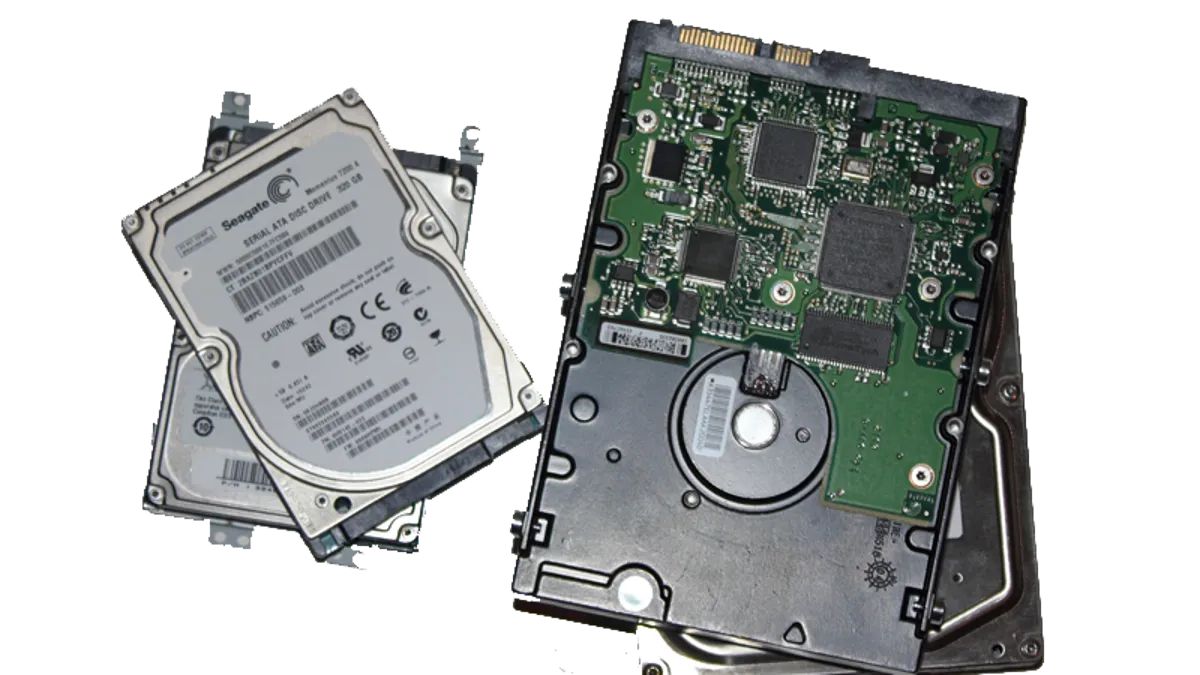Introduction
In today’s digital age, storage devices play a crucial role in our daily lives. Whether it’s for personal use or business purposes, having a reliable and stable storage solution is essential. Two of the most popular options in the market are Solid State Drives (SSD) and Hard Disk Drives (HDD). While both serve the purpose of storing and retrieving data, there is a distinct difference when it comes to their stability.
An SSD, short for Solid State Drive, is a modern storage device that uses flash memory to store data. It has gained popularity in recent years due to its superior performance and reliability. On the other hand, an HDD, which stands for Hard Disk Drive, is a traditional storage device that utilizes rotating magnetic platters and mechanical arms to read and write data.
In this article, we will delve into the reasons why SSDs are considered more stable than HDDs. We will explore the differences in their structure, the absence of moving parts in SSDs, and the impact of physical movements, mechanical failures, and environmental factors on their stability. By understanding these factors, we can make an informed decision when choosing the most stable storage solution for our needs.
What is an SSD?
An SSD, or Solid State Drive, is a type of storage device that has gained significant popularity in recent years. Unlike traditional Hard Disk Drives (HDDs), which use rotating magnetic platters and mechanical arms to read and write data, SSDs utilize flash memory technology to store data. This flash memory is similar to the type of memory found in USB drives and memory cards.
One of the key advantages of an SSD is its speed. Since there are no moving parts involved in the data retrieval process, SSDs can access and transfer data much faster than HDDs. This makes them ideal for tasks that require high data read/write speeds, such as booting up operating systems, launching applications, and transferring large files.
Additionally, SSDs are known for their durability and longevity. With no mechanical components to wear out, they are more resistant to physical damage from drops, shocks, and vibrations. This makes them an excellent choice for portable devices like laptops and tablets, as they can withstand the rigors of daily use.
Another notable feature of SSDs is their compact size. Compared to HDDs, which require a significant amount of space due to their mechanical components, SSDs are much smaller and lighter. This makes them a preferred option for devices with limited space, such as ultrabooks and small form-factor PCs.
Furthermore, SSDs produce less heat and noise compared to HDDs. Since there are no spinning disks or moving parts generating friction, SSDs operate silently and generate minimal heat. This not only contributes to a more pleasant user experience but also helps in maintaining a cooler and more energy-efficient system.
In summary, SSDs are modern storage devices that utilize flash memory technology to provide fast, durable, and compact storage solutions. With their superior performance and stability, SSDs have become the preferred choice for individuals and businesses looking for reliable and efficient storage options.
What is an HDD?
An HDD, or Hard Disk Drive, is a traditional storage device that has been around for several decades. It is designed to store and retrieve data using rotating magnetic platters and mechanical arms. These platters are coated with a magnetic material where data is stored in binary form, while the mechanical arms read and write data onto the platters.
The primary advantage of an HDD is its cost-effectiveness in terms of storage capacity. HDDs are available in larger capacities compared to SSDs, making them an ideal choice for storing large amounts of data, such as multimedia files, databases, and archives. This makes them popular for desktop computers, servers, and other applications that require extensive storage space.
However, one of the drawbacks of HDDs is their slower speed compared to SSDs. The mechanical nature of HDDs means that data access and transfer speeds are slower, as the mechanical arms need to physically move to the correct location on the spinning platters. This can lead to longer loading times for applications and slower system performance.
HDDs also tend to be more susceptible to physical damage. Since they rely on spinning disks and mechanical components, they are more prone to failure due to drops, shocks, and vibrations. Any physical impacts can lead to damage to the delicate mechanical parts of the drive, resulting in data loss and the need for costly repairs or data recovery.
Another limitation of HDDs is their larger size and weight compared to SSDs. The presence of mechanical components requires more physical space, making HDDs bulkier and heavier. This can be a disadvantage for portable devices where mobility and compactness are important factors.
Furthermore, HDDs generate more heat and noise compared to SSDs. The spinning platters and mechanical arms create friction, resulting in both heat and noise during operation. This can contribute to a less pleasant user experience, especially in quiet environments or when using a device for prolonged periods.
In summary, HDDs are traditional storage devices that rely on rotating magnetic platters and mechanical arms to store and access data. They offer cost-effective solutions for high-capacity storage needs but suffer from slower speeds, susceptibility to physical damage, larger size, and increased heat and noise generation compared to SSDs.
Differences in structure
One of the key factors that contribute to the different levels of stability between SSDs and HDDs is their inherent structural differences. Let’s take a closer look at how these two storage devices are structured.
An SSD, or Solid State Drive, is composed of several main components. At the core is the flash memory, which is where the data is stored. The flash memory is made up of NAND cells, which are organized into blocks and pages. These cells can retain data even when the power is turned off, making them non-volatile. Additionally, SSDs have a controller that manages the reading and writing of data, regulates the memory cells, and helps maintain the drive’s performance and stability.
On the other hand, an HDD, or Hard Disk Drive, consists of mechanical parts that facilitate the storage and retrieval of data. At the center of the HDD is the spindle, which holds the rotating platters. These platters are coated with a magnetic material and are responsible for storing the data. The read/write heads, attached to the end of the mechanical arms, move across the spinning platters to access and modify the data. Additionally, HDDs have a controller that manages the motor that spins the platters and controls the movement of the read/write heads.
The structural differences between SSDs and HDDs have significant implications for their stability. Due to the absence of any moving parts in SSDs, they are less susceptible to physical damage caused by drops, shocks, or vibrations. This makes them more reliable and durable, especially in portable devices that are more prone to accidents or rough handling.
On the other hand, HDDs are inherently more vulnerable to physical damage due to their mechanical components. The spinning platters and moving read/write heads make them more susceptible to failures caused by physical impacts or mishandling. Even a slight misalignment or damage to these delicate components can result in data loss or a complete drive failure.
Another aspect to consider is the power consumption of SSDs and HDDs. SSDs generally consume less power compared to HDDs due to their lack of mechanical components and the need for less energy to access data. This not only contributes to energy efficiency but also reduces the risk of overheating, further enhancing the stability of the SSDs.
In summary, the structural differences between SSDs and HDDs significantly impact their stability. The absence of moving parts in SSDs makes them more resistant to physical damage, while the mechanical components of HDDs make them more susceptible to failures caused by physical impacts. Understanding these differences can help users make informed decisions when choosing the most stable storage solution for their needs.
SSD: No Moving Parts
One of the key reasons why SSDs are considered more stable than HDDs is the absence of moving parts. Unlike HDDs, which rely on rotating platters and moving mechanical arms, SSDs have a solid-state design with no moving components.
By eliminating the need for mechanical parts, SSDs inherently become more reliable and durable. The lack of moving parts significantly reduces the risk of mechanical failures, such as the read/write heads crashing, motor malfunctions, or spindle issues, which are common problems with HDDs.
Without any moving parts to wear out or become misaligned, SSDs can better withstand physical shocks, vibrations, and drops. This makes them ideal for portable devices like laptops, tablets, and smartphones, which are often subjected to movement and occasional accidents.
Moreover, the absence of moving components also means that SSDs operate silently, without the noise typically associated with HDDs. The silence contributes to a more peaceful working environment and a more enjoyable user experience overall.
Another advantage of an SSD’s solid-state design is its resistance to temperature fluctuations. Since there are no mechanical parts generating heat, SSDs tend to operate at lower temperatures compared to HDDs. This helps to reduce the risk of overheating and potential damage to sensitive components, leading to improved stability and reliability.
Furthermore, the absence of moving parts allows SSDs to have faster access times and data transfer rates. Without the physical limitations of mechanical arms moving across platters, SSDs can retrieve and write data nearly instantaneously. This leads to improved overall system responsiveness and faster load times for applications.
Additionally, the lack of moving parts in SSDs contributes to their power efficiency. The absence of mechanical components means that SSDs require less power to operate. This not only extends the battery life of portable devices but also reduces the risk of power-related issues and heat dissipation.
In summary, the absence of moving parts in SSDs is a significant factor contributing to their stability. With no mechanical failures to worry about, decreased vulnerability to physical shocks, silent operation, resistance to temperature fluctuations, faster access times, and improved power efficiency, SSDs provide a more stable and reliable storage solution compared to their HDD counterparts.
HDD: Mechanical Components
Unlike SSDs, Hard Disk Drives (HDDs) rely on mechanical components for their operation. These moving parts, while essential for storing and accessing data, also contribute to the lower stability compared to SSDs.
One of the crucial mechanical components in an HDD is the rotating platters. These platters are coated with a magnetic material, and data is stored on them in binary form. The platters spin at high speeds, typically ranging from 5,400 to 15,000 revolutions per minute (RPM), depending on the drive’s specifications.
Attached to the mechanical arms are the read/write heads, which move across the spinning platters to read and write data. The movement of the read/write heads determines the precise location on the platters where the data is accessed or stored. This mechanical movement is a critical part of HDD operation but also makes HDDs more susceptible to stability issues.
The nature of these mechanical components means that HDDs are more vulnerable to physical damage, such as drops, shocks, or vibrations. Even a slight mishandling or accidental impact can cause misalignment or damage to the moving parts, leading to data loss or complete drive failure.
Another factor affecting the stability of HDDs is the potential for mechanical failures. With moving parts, there is always a risk of components wearing out over time. The read/write heads, for example, are delicate and can crash into the spinning platters if a drive experiences excessive vibrations or if the heads become misaligned. Additionally, the motor that spins the platters can fail, resulting in the drive’s inability to function properly.
HDDs are also subject to issues like stiction, where the read/write heads become stuck to the platters due to static or other factors, preventing proper operation. This can result in data loss or the need for professional intervention to recover the data.
Furthermore, the mechanical nature of HDDs contributes to their noise generation during operation. The spinning platters and the movement of the read/write heads produce audible sounds, commonly referred to as HDD “whirring” or “clicking” noises. While these noises are generally normal, excessive or irregular sounds may indicate a potential mechanical problem.
Lastly, the mechanical components in HDDs also introduce limitations in terms of power consumption. The spinning platters and moving read/write heads require additional energy, resulting in higher power consumption compared to SSDs. This can generate more heat and lead to increased energy costs.
In summary, the presence of mechanical components in HDDs introduces potential stability issues. The vulnerability to physical damage, potential mechanical failures, noise generation, and increased power consumption are factors that make HDD less stable compared to SSDs. Understanding these limitations can help users make informed decisions when considering the stability of storage options.
Stability of SSD
When it comes to stability, Solid State Drives (SSDs) outshine Hard Disk Drives (HDDs) due to their solid-state design and absence of moving parts. Let’s explore the factors that contribute to the stability of SSDs.
Since SSDs do not contain any mechanical components that can wear out or fail, they have a higher level of stability compared to HDDs. With no moving parts, SSDs are more resistant to physical shocks, vibrations, and drops. This makes them more reliable and durable, especially for portable devices or situations where data integrity is crucial.
The non-volatile nature of the flash memory used in SSDs also plays a role in their stability. Unlike volatile memory, which requires a constant power source to retain data, SSDs can retain data even when the power is turned off. This reduces the risk of data loss during sudden power outages or system crashes, enhancing the overall stability of the drive.
Furthermore, SSDs are less susceptible to temperature fluctuations compared to HDDs. The absence of moving parts means there is less friction and heat generation during operation, resulting in lower operating temperatures. The stability and reliability of SSDs are improved as a result, as they are less prone to overheating and potential damage caused by high temperatures.
Another factor contributing to the stability of SSDs is their fast data access and transfer speeds. Without the mechanical limitations of moving arms and spinning platters, SSDs can retrieve and write data quickly. The fast access times enhance system responsiveness and contribute to a stable computing experience, especially when dealing with resource-intensive tasks or multi-tasking.
SSDs also have built-in error correction mechanisms, such as advanced algorithms and error-correcting codes (ECC), to ensure data integrity and stability. These mechanisms detect and correct any data errors that may occur during the storage or retrieval process, reducing the risk of data corruption and improving the overall stability of the drive.
Additionally, the lack of moving components in SSDs results in silent operation. Unlike HDDs, which can generate noise due to the spinning platters and moving read/write heads, SSDs operate silently. This not only contributes to a more comfortable and peaceful working environment but also eliminates the risk of stability issues caused by mechanical noises or irregular sounds.
In summary, the stability of SSDs is significantly higher compared to HDDs. The absence of moving parts, non-volatile flash memory, resistance to temperature fluctuations, fast data access, built-in error correction mechanisms, and silent operation all contribute to the overall stability and reliability of SSDs. These factors make SSDs an excellent choice for those who prioritize stability and data integrity in their storage solutions.
Stability of HDD
While Solid State Drives (SSDs) offer superior stability, Hard Disk Drives (HDDs) still have their own level of stability to consider. Let’s explore the factors that impact the stability of HDDs.
One of the factors contributing to the stability of HDDs is their solid construction. The rigid design of an HDD, with its robust metal casing and durable internal components, provides a level of protection against physical damage. This makes HDDs more resilient to external factors such as minor bumps or drops, providing a certain degree of stability.
HDDs also have a long track record of reliability and stability. Their mechanical-based design has been refined over decades, resulting in a mature technology that has proven itself in various applications and under different operating conditions. This stability is reflected in the widespread use of HDDs in enterprise environments, where data integrity and reliability are critical.
Furthermore, the larger storage capacities offered by HDDs can contribute to stability from an organizational standpoint. In situations where a vast amount of data needs to be stored and accessed, HDDs provide a cost-effective solution. This stability stems from the ability to store and manage large amounts of data, which is crucial for businesses and individuals with extensive storage needs.
An important consideration in the stability of HDDs is their ability to handle power loss situations. Compared to SSDs, HDDs are less susceptible to immediate data loss in cases of sudden power loss or system shutdown. This is due to the mechanical design of an HDD, which stores data on the magnetic platters and requires power to move the read/write heads. However, it is still essential to properly shut down an HDD to minimize the risk of data corruption or other stability issues.
Although HDDs may produce noticeable noise during operation due to the spinning platters and moving read/write heads, this does not necessarily indicate a stability issue. While the noise generated by HDDs may be considered a drawback in certain environments, it doesn’t necessarily affect the overall stability or reliability of the drive.
However, it’s important to note that the mechanical nature of HDDs does pose potential stability concerns. The moving parts in an HDD, such as the rotating platters and read/write heads, can be susceptible to failure or damage. Any misalignment or malfunction of these mechanical components can result in data loss or a complete drive failure, leading to instability and unrecoverable data loss.
In summary, while HDDs offer stability in terms of their solid construction, reliability, and ability to handle power loss situations, their mechanical nature introduces potential instability risks. The moving parts of an HDD make it susceptible to failure or damage, which can lead to data loss and drive instability. Understanding these factors is crucial when considering the stability and reliability of HDDs in various storage applications.
Factors Impacting Stability
When considering the stability of storage solutions, several factors come into play. These factors can have a significant impact on the stability of both Solid State Drives (SSDs) and Hard Disk Drives (HDDs). Let’s explore some of the key factors that influence the stability of these storage devices.
One factor that impacts stability is physical movement. Both SSDs and HDDs are sensitive to physical shocks, vibrations, and drops. However, due to their solid-state design and absence of moving parts, SSDs are generally more stable when it comes to physical movement. The lack of mechanical components in SSDs reduces the risk of damage and data loss caused by accidental impacts or mishandling.
Mechanical failure is another significant factor that affects stability. HDDs, with their mechanical components, are more prone to mechanical failures compared to SSDs. The moving parts in HDDs, such as the spinning platters and read/write heads, can wear out over time and lead to data loss or complete drive failure. SSDs, on the other hand, do not suffer from mechanical failures since they have no moving parts. This difference contributes to the greater stability of SSDs in terms of mechanical reliability.
Environmental factors also play a role in the stability of storage devices. Both SSDs and HDDs can be affected by extreme temperatures, high humidity levels, and exposure to dust or moisture. However, SSDs tend to be more resistant to such environmental factors due to their solid-state construction. The lack of moving parts in SSDs reduces vulnerability to temperature-related issues and components becoming damaged or misaligned. HDDs, with their mechanical components, are more sensitive to environmental conditions, making them more susceptible to stability issues under extreme or unfavorable environments.
Another factor impacting stability is the age and usage of the drive. As storage devices age, both SSDs and HDDs can become more prone to stability issues. In the case of SSDs, the lifespan of the flash memory cells can be limited by the number of write cycles they endure. However, modern SSDs have built-in wear-leveling algorithms that distribute write operations evenly across the memory cells, helping to mitigate this issue. HDDs, on the other hand, may suffer from performance degradation as the mechanical components wear out over time. This can result in slower data access and decreased overall stability.
Additionally, the integrity of the file system being used on the drive can impact stability. File system errors, corruption, or fragmentation can result in data loss or system crashes. Regular maintenance, such as running disk checks and defragmentation, can help improve the stability of both SSDs and HDDs by identifying and resolving file system issues.
In summary, several factors impact the stability of storage devices. Physical movement, mechanical failure, environmental conditions, drive age and usage, and file system integrity are all factors that influence the stability of both SSDs and HDDs. Understanding these factors can help users make informed decisions when choosing the most stable storage solution for their specific needs.
Impact of Physical Movement
The physical movement of storage devices can have a significant impact on their stability. Both Solid State Drives (SSDs) and Hard Disk Drives (HDDs) are sensitive to physical shocks, vibrations, and drops, but the extent of their stability differs. Let’s explore how physical movement affects the stability of these storage devices.
SSDs, with their solid-state design and absence of moving parts, are generally more stable when it comes to physical movement. The lack of mechanical components in SSDs reduces the risk of damage and data loss caused by accidental impacts or mishandling. This makes SSDs an ideal choice for portable devices like laptops and tablets, where physical movement and the potential for drops or bumps are more likely to occur.
HDDs, in contrast, are more susceptible to instability caused by physical movement. The components inside an HDD, such as the spinning platters and the read/write heads, are delicate and can be easily damaged if subjected to excessive shocks or vibrations. Even a slight misalignment or damage to these mechanical parts can result in data loss or complete drive failure. It is therefore essential to handle HDDs with care and avoid subjecting them to unnecessary physical stresses.
Another aspect related to physical movement is drive mounting or installation. SSDs, being more robust due to their solid-state construction, are less sensitive to slight movements or vibrations while being mounted or installed. This gives users more flexibility and ease during installation, without the need for special precautions to avoid potential stability issues.
On the other hand, HDDs require a more stable mounting environment due to their mechanical components. Any excessive vibrations or movements in the mounting setup can affect the smooth operation of the spinning platters and read/write heads, potentially resulting in data access errors or performance degradation. To ensure stability, HDDs are usually mounted using anti-vibration mounts or cages to minimize the impact of external vibrations.
In scenarios where physical movement cannot be avoided, such as in portable devices or environments where they may be subject to frequent transport, SSDs offer a higher level of stability compared to HDDs. The absence of moving parts in SSDs eliminates the risk of mechanical failures from physical movement, making them more reliable and resistant to shocks or vibrations.
In summary, physical movement can have a significant impact on the stability of storage devices. SSDs, with their solid-state construction and absence of mechanical components, are more stable when subjected to physical movement, making them ideal for portable devices. HDDs, with their mechanical components, are more vulnerable to damage or failures caused by physical shocks and vibrations. Proper handling and mounting precautions are necessary to ensure the stability of both SSDs and HDDs, but SSDs generally offer a higher level of stability in scenarios involving physical movement.
Impact of Mechanical Failure
Mechanical failure is a critical factor that can greatly impact the stability of storage devices, particularly Hard Disk Drives (HDDs). Unlike Solid State Drives (SSDs), which lack moving parts, HDDs rely on mechanical components, and these components can be vulnerable to various types of mechanical failures. Let’s explore the impact of mechanical failure on the stability of HDDs.
One of the most common mechanical failures in HDDs involves the read/write heads. These delicate components are responsible for reading and writing data onto the spinning platters. Any misalignment or damage to the heads can result in data loss or corruption. In severe cases, the heads may physically crash into the platters, causing irreparable damage to the drive and rendering the data inaccessible.
Other mechanical failures in HDDs can include issues with the spindle motor that spins the platters or the actuator arm that positions the heads. Problems with the motor can lead to inconsistent platter speed, affecting the drive’s performance and stability. Similarly, issues with the actuator arm can result in difficulties positioning the heads accurately, causing read/write errors and overall instability.
In addition to these mechanical failures, various factors can contribute to their occurrence. Excessive heat or improper cooling can accelerate mechanical degradation, leading to an increased risk of failure. Additionally, physical shocks or vibrations caused by mishandling or device drops can also increase the likelihood of mechanical failures within HDDs.
The impact of mechanical failures extends beyond data loss and drive instability. Failed mechanical components can disrupt the smooth operation of the HDD, leading to increased noise levels during operation. Unusual clicking, grinding, or whirring noises may indicate mechanical issues, which can further impede system stability and user experience.
Mechanical failures within an HDD can also have a cascading effect, potentially affecting other components. For example, a failed read/write head may scratch the platter surface, causing additional physical damage and compromising the integrity of nearby sectors. This domino effect can exacerbate instability and increase the risk of data corruption or complete drive failure.
It is important to note that while mechanical failures are more common in HDDs due to their moving parts, it does not mean that SSDs are completely immune to mechanical failures. However, the absence of moving parts significantly reduces the risk of such failures in SSDs, making them inherently more stable and reliable in terms of mechanical reliability.
In summary, mechanical failures can have a significant impact on the stability and reliability of HDDs. Failures involving the read/write heads, spindle motor, or actuator arm can result in data loss, increased noise levels, and overall drive instability. Factors like heat, physical shocks, and mishandling can contribute to the occurrence of mechanical failures. Understanding the risks associated with mechanical failures is crucial when assessing the stability of HDDs and considering alternative storage options like SSDs.
Impact of Environmental Factors
Environmental conditions can significantly impact the stability of storage devices, whether they are Solid State Drives (SSDs) or Hard Disk Drives (HDDs). Let’s explore how different environmental factors can affect the stability of these storage devices.
One of the key environmental factors that can impact stability is temperature. Both SSDs and HDDs have optimal temperature ranges within which they are designed to operate. Extreme temperatures, whether hot or cold, can affect the performance and reliability of storage devices. Excessive heat can lead to faster wear and tear of components, increased chances of data corruption, and potential drive failure. On the other hand, very cold temperatures may impede proper mechanical movement in HDDs or affect the electrical conductivity of components in both SSDs and HDDs. It is crucial to ensure that storage devices are kept within their recommended temperature ranges to maintain stability.
Humidity is another environmental factor that can affect the stability of storage devices. High humidity levels can cause moisture to condense inside the drive, leading to potential damage and corrosion of the delicate electronic components. This can result in drive instability, data loss, and reduced longevity. It is important to protect both SSDs and HDDs from high humidity environments to maintain their stability and reliability.
Dust and particles in the environment can also impact the stability of storage devices. Accumulation of dust inside the drive can hinder proper operation and cooling, potentially leading to overheating and instability. Additionally, particles in the air, such as smoke or airborne contaminants, can find their way into the drive and settle on the sensitive components, causing electrical shorts or other issues. Regular cleaning and maintaining a clean environment can help mitigate the impact of dust and particles on storage device stability.
Magnetic fields, another environmental factor, can influence the stability of HDDs. Strong magnetic fields can disrupt the magnetic alignment of the platters and affect the accuracy of data read/write operations. While modern HDDs have built-in shielding to mitigate the impact of external magnetic fields, it is still advisable to keep them away from sources of strong magnetic interference to ensure stability.
Furthermore, environmental factors such as power fluctuations or electrical disruptions can impact stability. Power surges, spikes, or sudden power losses can lead to data corruption or damage to storage devices. It is recommended to use surge protectors or uninterruptible power supplies (UPS) to protect both SSDs and HDDs from potential power-related stability issues.
In summary, various environmental factors can have a significant impact on the stability of storage devices. Temperature extremes, high humidity, dust particles, magnetic fields, and power fluctuations are all considerations when it comes to ensuring stability. Taking proper precautions, such as maintaining recommended temperature and humidity levels, keeping storage devices clean, protecting against magnetic fields, and using power conditioning equipment, can help mitigate the impact of environmental factors and maintain the stability and reliability of both SSDs and HDDs.
Conclusion
When it comes to the stability of storage devices, Solid State Drives (SSDs) have proven to be more stable than their Hard Disk Drive (HDD) counterparts. The absence of moving parts in SSDs eliminates the risks associated with mechanical failures, making them more reliable and durable. SSDs also have the advantage of being more resistant to physical shocks and vibrations, making them ideal for portable devices or situations where data integrity is crucial.
Additionally, SSDs demonstrate stability in terms of temperature resistance, power efficiency, and overall performance. Their solid-state design allows for faster data access and transfer speeds, resulting in improved system responsiveness. They are also more energy-efficient, generate less heat, and produce no noise during operation.
On the other hand, HDDs, with their mechanical components, are more susceptible to stability issues. Mechanical failures, such as issues with read/write heads or spindle motors, can result in data loss or complete drive failure. Furthermore, HDDs are more prone to damage from physical movement, environmental factors like temperature and humidity, and they consume more power compared to SSDs.
Considering all factors, it is clear that SSDs offer a higher level of stability and reliability. However, it is important to note that HDDs still have their place in specific storage scenarios, particularly when large capacities are required at a lower cost. HDDs continue to serve well in enterprise environments with extensive storage needs and where long-term data retention is essential.
Ultimately, the choice between SSDs and HDDs depends on individual requirements and priorities. If stability, speed, and endurance are of utmost importance, SSDs are the better option. On the other hand, if maximum storage capacity at an affordable price point is the priority, HDDs remain a viable choice.
With advancements in SSD technology and decreasing prices, the trend is moving toward SSDs becoming the more dominant and preferred choice for general storage needs. As technology continues to evolve, it is expected that SSDs will continue to improve in terms of stability, performance, and affordability.
Overall, understanding the differences in structure, impact of physical movement, mechanical failures, environmental factors, and other variables allows users to make informed decisions when choosing the most stable storage solution for their specific needs, whether it be an SSD or an HDD.







